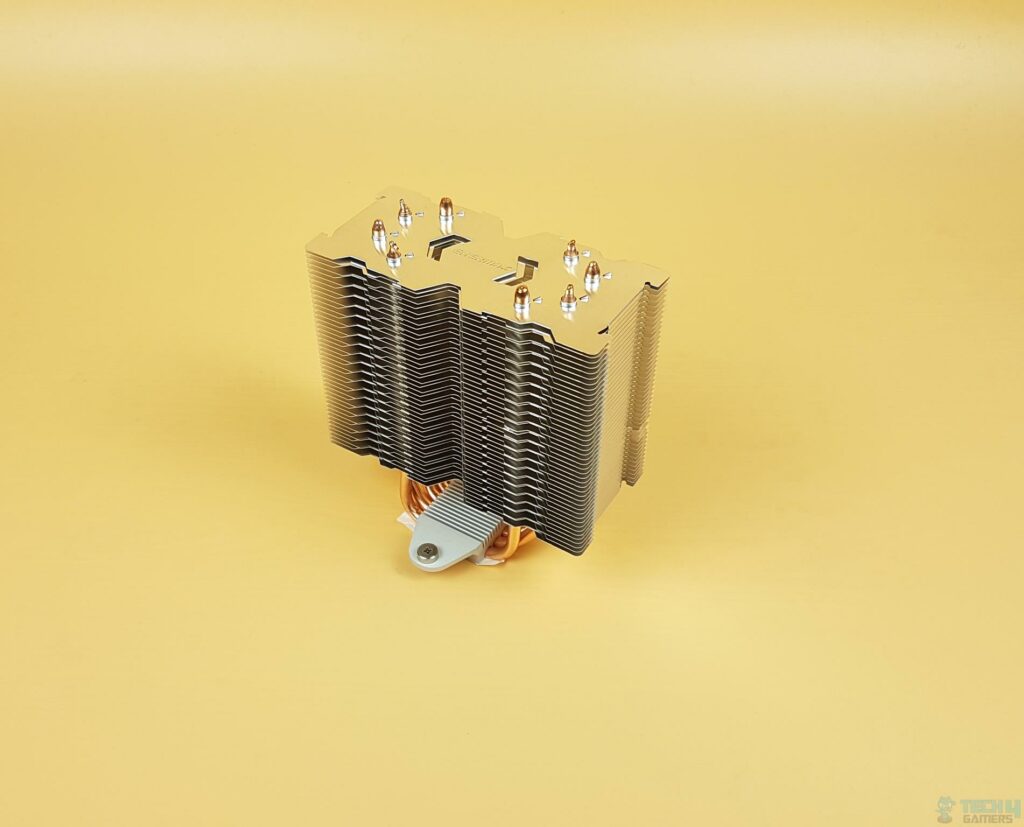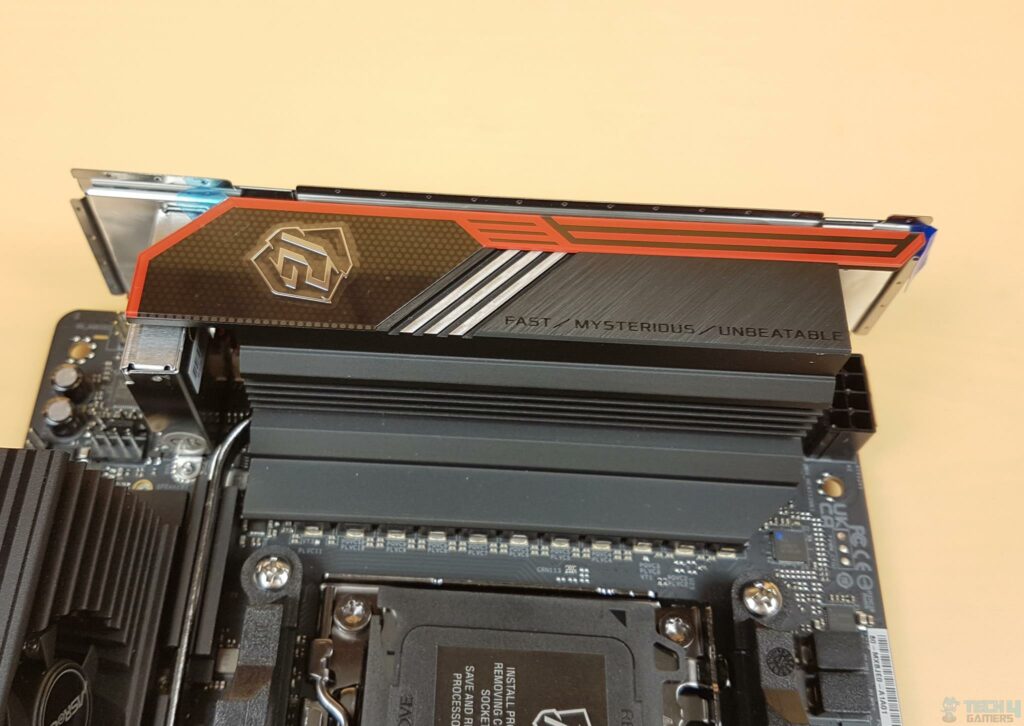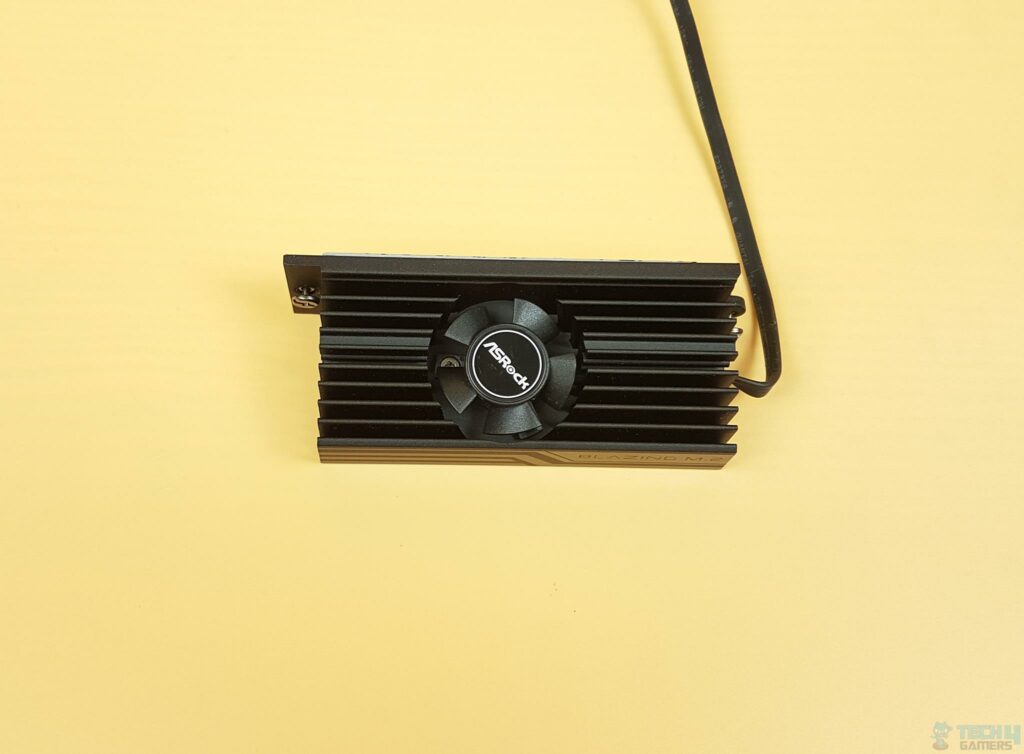In the realm of computer hardware, efficient heat management is a critical concern. As electronic components tirelessly process data, they generate heat as a natural consequence of their electrical activity. The unchecked accumulation of this heat can lead to a cascade of problems like thermal throttling. Heatsink is an important traditional cooling element that averts these problems and facilitates the cooling process. In this article, I will explain the PC heatsink along with its working principle in detail.
Key Takeaways
- Heatsinks are made of highly conductive metals and are used in dissipating heat from CPUs and GPUs.
- The large surface area of the heatsink, due to its fins, facilitates the convective heat transfer between the heatsink and the air.
- Radiators are a part of advanced liquid cooling setups, while the heatsink-fan arrangement is a traditional cooling method.
What Is A heatsink In A PC?

A heatsink is a component used in computers to dissipate heat from electronic components, such as CPU and GPUs. It is made out of metals with high conductivity like Copper or Aluminium. Usually, the heatsink is attached to the hot component, like a CPU or GPU, using a thermal compound. It provides a pathway for heat to move away from the component and into the surrounding air [1].
How Does A Heatsink Work?

When a computer component generates heat during its operation, that heat is transferred to the bottom of the heatsink through thermal conduction using thermal paste. From there, the enhanced surface area of the heatsink due to its fins helps it exchange that heat with the surrounding air through the process of thermal convection[2].
Often the normal flow of air is not enough to allow for rapid cooling. To enhance this heat dissipation process, a fan is commonly attached to the heatsink. This fan blows air over the heatsink’s fins, promoting convective heat transfer. As the air flows over the fins, it absorbs the heat and carries it away[3].
PC Radiator Vs Heatsink Fan

Below is a brief overview of these two cooling methods:
| PC Radiator | Heatsink Fan |
|---|---|
| Dissipates heat from the liquid coolant by transferring it to the surrounding air. | Dissipates heat directly from a component (e.g., CPU) using fins and transfers it to surrounding air. |
| Liquid coolant carries heat away from components to the radiator, where fans expel heat. | Solid heatsink conducts heat from the component, and fans blow air over fins to dissipate heat. |
| Installation can be more complex due to additional components like pump and tubing. | Generally simpler to install, typically requiring attachment of heatsink and fan. |
| May require periodic coolant checks and potential maintenance. | May require occasional cleaning to remove dust buildup on the heatsink. |
| Suitable for cooling both CPU and GPU using one loop. | Primarily designed for cooling the CPU, it may not handle GPU cooling in the same loop. |
| Generally higher costs due to the complexity of components. | Typically lower cost compared to a full liquid cooling setup. |
How To Replace Fan On Heatsink For PC?
You can easily replace the fan on the heatsink by following the below steps:
- Power off your PC and disconnect it from the power source.
- Open your PC case to access the heatsink-fan unit.
- Locate the cable connecting the old fan to the motherboard or fan controller. Gently disconnect the cable.
- Unfasten any clips, screws, or brackets securing the old fan to the heatsink. If applicable, detach rubber mounts as well.
- Use compressed air or a soft brush to clean dust and debris from the heatsink and fins.
- Place the new fan over the heatsink, aligning it with the same orientation as the old fan. Ensure the fan’s airflow direction matches the heatsink design.
- Use the included clips, screws, or brackets to attach the new fan to the heatsink. If there are rubber mounts, hook them into the designated holes.
- Attach the cable of the new fan to the appropriate fan header on the motherboard or fan controller. Ensure a secure connection.
- Power on your PC to verify that the new fan is spinning correctly. Adjust fan settings as needed.
- Close your PC case by reattaching the side panel or top cover.
Related Helpful Resources By Tech4Gamers:
References:
- Radian Technologies. What is a Heatsink? Retrieved from: https://radianheatsinks.com/heatsink/
- Homo Ludens. Thermal Design. Retrieved from: https://ludens.cl/Electron/Thermal.html
- Margaret Rouse (Techopedia). HEATSINK AND FAN (HSF). Retrieved from: https://www.techopedia.com/definition/5291/heat-sink-and-fan-hsf
FAQs
Usually, it takes 20-30 minutes to replace a heatsink. This time can vary based on the complexity of the system and your expertise.
Yes, it is technically possible to run your PC without a heatsink. But if you keep operating it without a heatsink or any alternative cooling method, the temperatures will surpass safe limits and can damage your PC components.
Heatsink is a passive cooling element and does not have electric wires or a feedback mechanism. So, most PCs will not give you a warning in case of heatsink problems. However, unusually high temperatures can be a sign of heatsink-related problems.
Yes, the heatsink is necessary for a gaming PC, especially for the CPU and GPU.
Thank you! Please share your positive feedback. 🔋
How could we improve this post? Please Help us. 😔
[Wiki Editor]
Ali Rashid Khan is an avid gamer, hardware enthusiast, photographer, and devoted litterateur with a period of experience spanning more than 14 years. Sporting a specialization with regards to the latest tech in flagship phones, gaming laptops, and top-of-the-line PCs, Ali is known for consistently presenting the most detailed objective perspective on all types of gaming products, ranging from the Best Motherboards, CPU Coolers, RAM kits, GPUs, and PSUs amongst numerous other peripherals. When he’s not busy writing, you’ll find Ali meddling with mechanical keyboards, indulging in vehicular racing, or professionally competing worldwide with fellow mind-sport athletes in Scrabble at an international level. Currently speaking, Ali has completed his A-Level GCEs with plans to go into either Allopathic Medicine or Business Studies, or who knows, perhaps a full-time dedicated technological journalist.
Get In Touch: alirashid@tech4gamers.com


 Threads
Threads![Can A Motherboard Bottleneck A GPU? [Explained] Motherboard Bottlenecking GPU](https://tech4gamers.com/wp-content/uploads/2022/10/Can-A-Motherboard-Bottleneck-A-GPU-218x150.jpg)
![Thermal Throttling Explained [CPUs And GPUs]](https://tech4gamers.com/wp-content/uploads/2023/05/Thermal-Throttling-218x150.jpg)


![What Is A Modular PSU? [Pros & Cons] Modular Bay](https://tech4gamers.com/wp-content/uploads/2024/05/REVOLUTION-D.F.-2-1200W-Gold-Modular-Bay-218x150.jpg)